The accompanying diagram represents a reversible cannot cycle for an ideal gas:
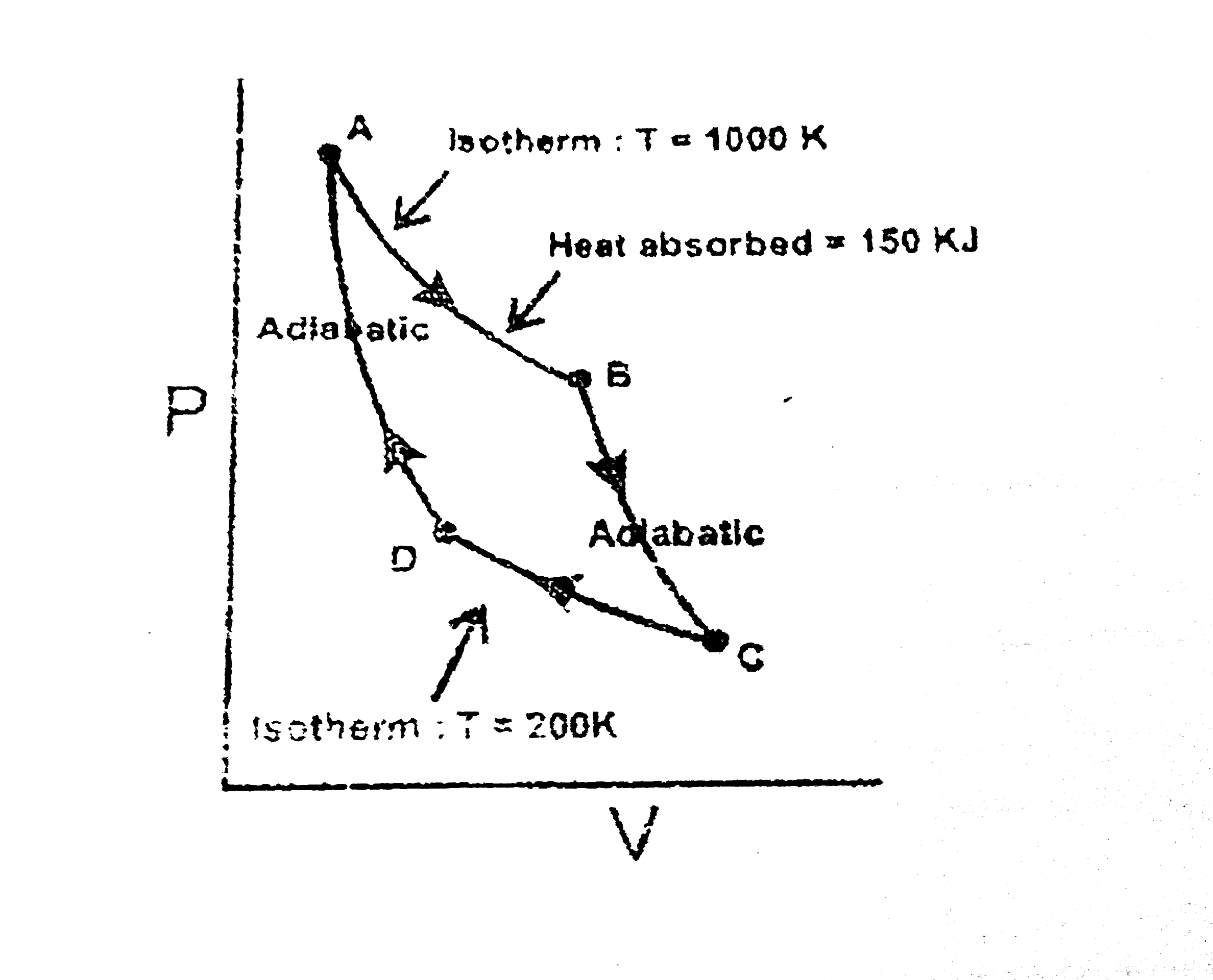
What is the Gibbs free energy change during the process A→B ?
150 KJ
−150KJ
30 KJ
data are not sufficient
The correct Answer is:B
ΔG=ΔH−TΔS ⇒ ΔH=0,ΔS=150JK−1 ⇒ ΔG=−150KJ
Topper's Solved these Questions
- BOOK - RESONANCE ENGLISHCHAPTER - THERMODYNAMICSEXERCISE - exercise-3 part-III Advanced level Solutions (STAGE-I)6videos
THERMODYNAMICS
- BOOK - RESONANCE ENGLISHCHAPTER - THERMODYNAMICSEXERCISE - exercise-3 part-III Advanced level Solutions (STAGE-II)38videos
THERMODYNAMICS
- BOOK - RESONANCE ENGLISHCHAPTER - THERMODYNAMICSEXERCISE - exercise-3 part-1 Advanced level Solutions30videos
THERMODYNAMICS
- BOOK - RESONANCE ENGLISHCHAPTER - TEST SERIESEXERCISE - CHEMISTRY50videos
TEST SERIES
Similar Questions
The accompanying diagram represents a reversible cannot cycle for an ideal gas:
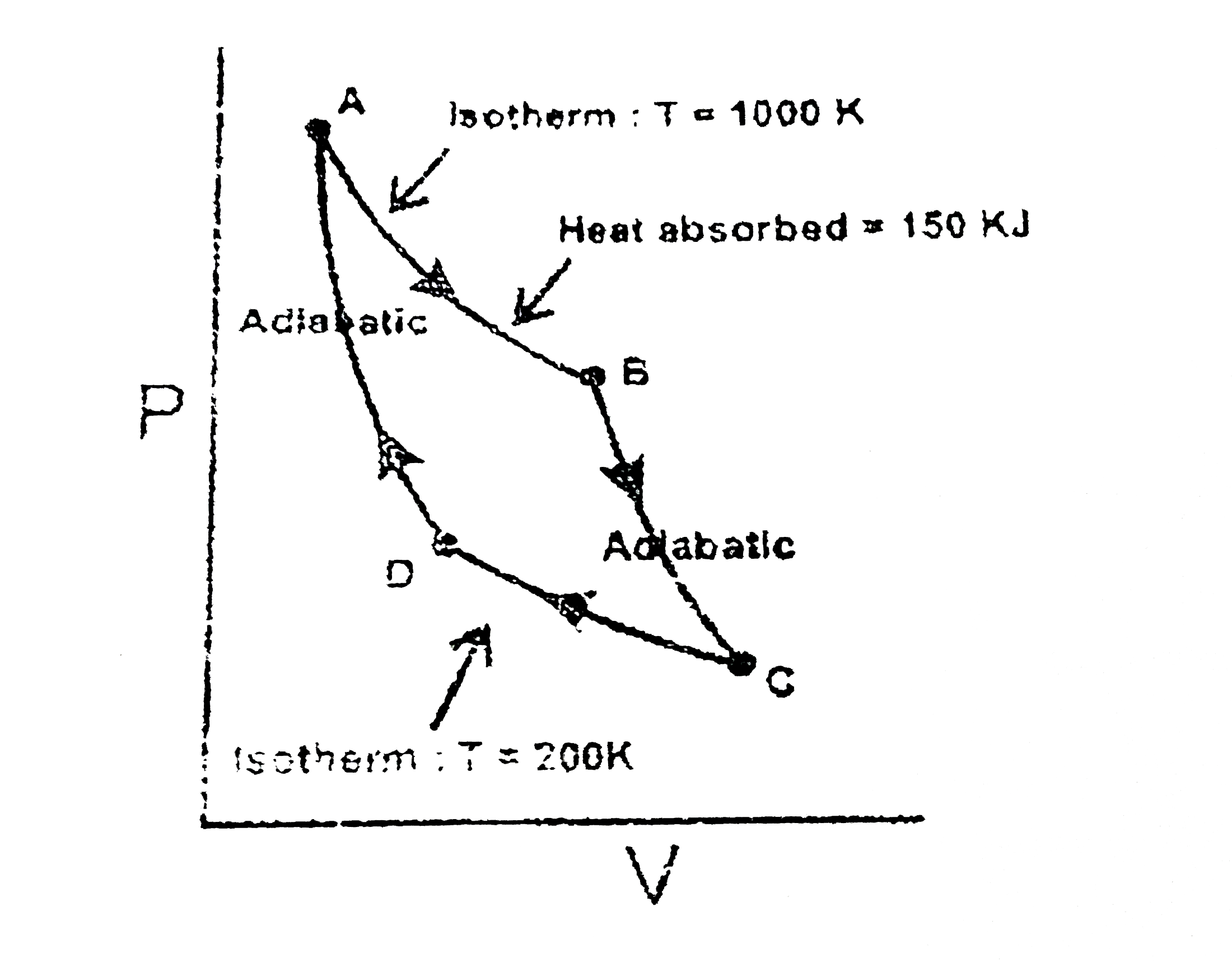
What is the entropy increase during isothermal at 1000K?View SolutionThe accompanying represents a reversible camot cycle for an ideal gas:
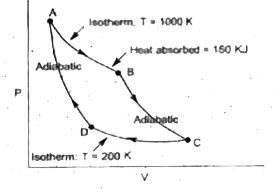
What is the entropy increase during isothemal expansion at 1000 K?View Solution
Knowledge Check
- Question 1 - Select One
Free energy change for a reversible process is
A>0B<0Cequal to zeroDunpredictable
The accompanying diagram represents a reversible cannot cycle for an ideal gas:
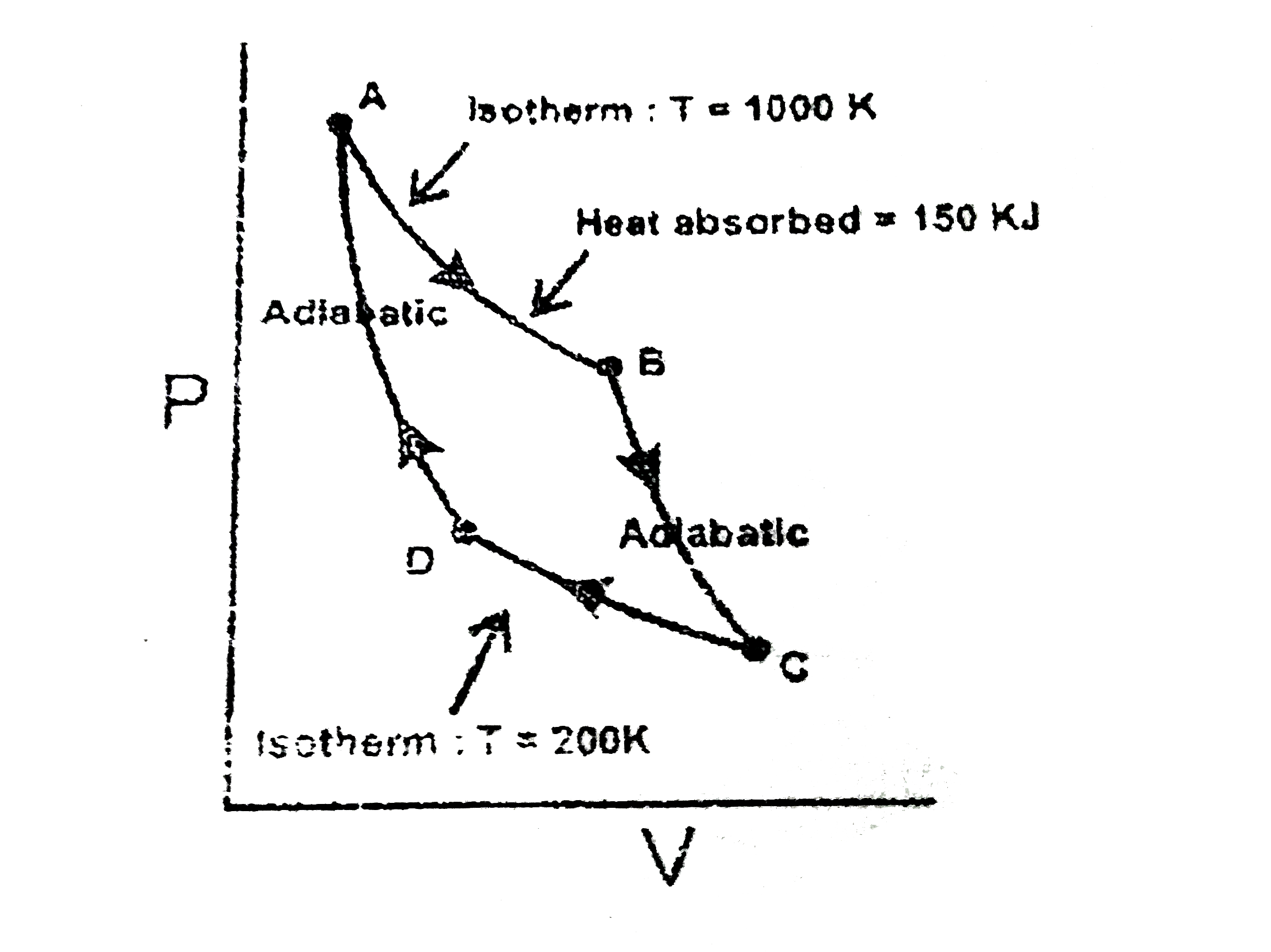
How many heat is rejected at the lower temperature, 200K, during the isothermal compression?View SolutionThe accompanying diagram represents a reversible cannot cycle for an ideal gas:

How many heat is rejected at the lower temperature, 200K, during the isothermal compression?View SolutionThree processes compose a thermodynamic cycle shown in the accompanying P−V, diagram of an ideal gas.
Process 1→2 take place at constant temperature, during this process 60J of heat enters the system.
Process 2→3 takes place at constant volume. During this process 40J of heat leaves the system.
Process 3→1 is adiabatic.
What is the change in internal energy of the during process 3→1?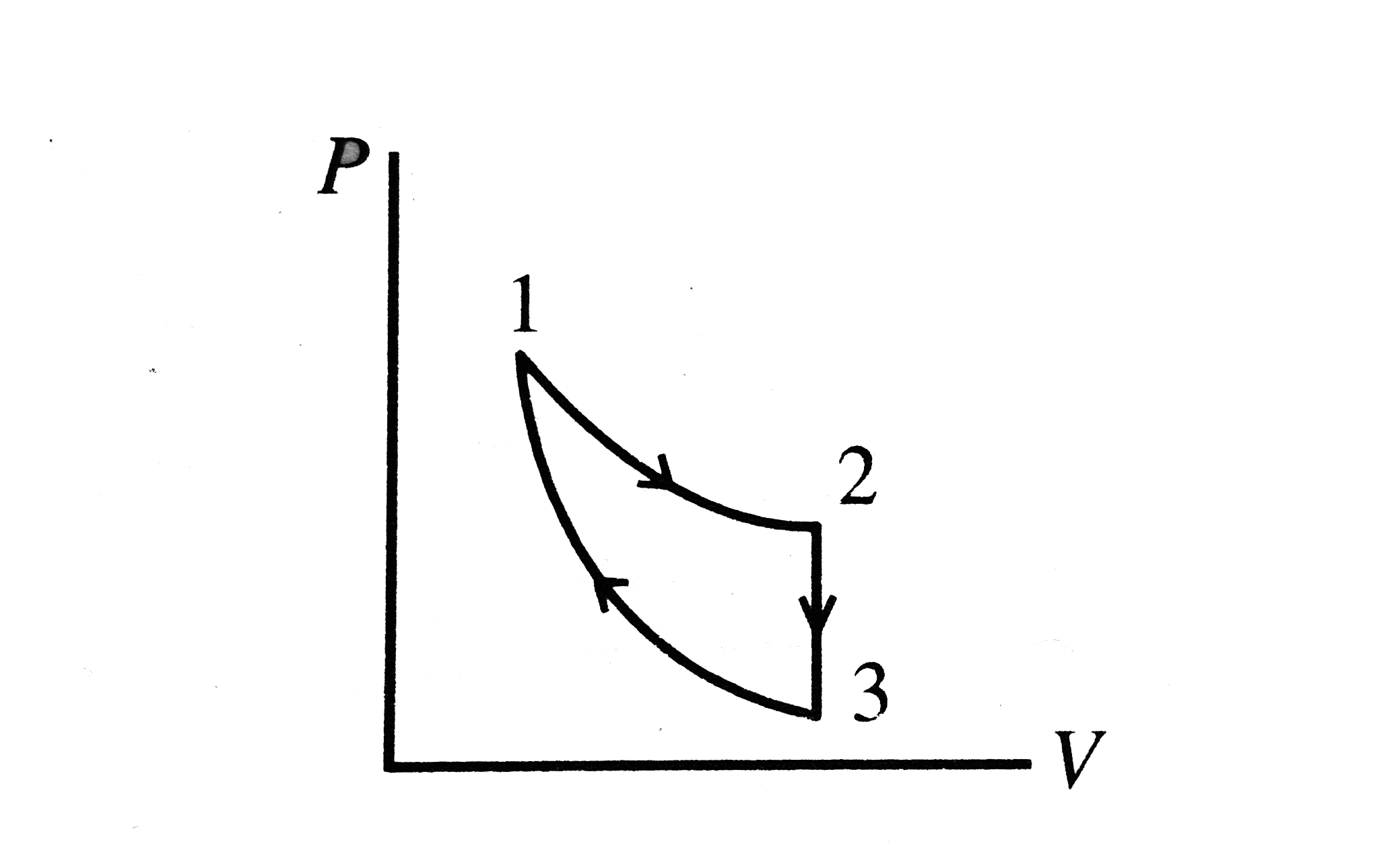 View Solution
View SolutionChange in internal energy in an isothermal process for ideal gas is
View SolutionThe P−V diagram of 2 gm of helium gas for a certain process A→B is shown in the figure. What is the heat given to the gas during the process A→B?
 View Solution
View SolutionAn ideal gas change from state a to state b as shown in Fig. what is the work done by the gas in the process?
 View Solution
View SolutionThe change in internal energy of two moles of a gas during adiabatic expansion is found to be -100 Joule. The work done during the process is
View Solution

